Abstract
Cheng, Lorraine (Radiobiochemistry Department, Chas. Pfizer & Co., Inc., Maywood, N. J.) and J. F. Snell. Studies in metabolic spectra. IV. Effects of tetracyclines, some of their derivatives, and chloramphenicol on accumulation of glutamic acid in Escherichia coli. J. Bacteriol. 83:711–719. 1962.—Escherichia coli strain 21 was incubated in the Warburg apparatus at 37 C with sodium acetate-2-C14 and 0.1 μmole/ml of various test compounds. Up to 1 hr, de novo C14-glutamic acid (synthesized from the C14-acetate precursor) accumulation in the fermentation broth was found to be a common phenomenon for the control cells and cells treated with oxytetracycline, chlortetracycline, tetracycline, and chloramphenicol. Subsequently, C14-glutamic acid continued to accumulate in the broth of the inhibited cells, but began to disappear from the broth of the control cells. During the first half hour, the rate of accumulation was most rapid in the presence of oxytetracycline. At 3 hr the total de nova C14-glutamic acid was found to be the same whether cells were treated with oxytetracycline or not. However, the distribution of this glutamic acid was different. In the oxytetracycline-treated cells, more than 87% of the total de nova C14-glutamic acid was in the broth, and only 13% was incorporated into the cell residue. In the control cells, no C14-glutamic acid was found in the broth, although 67% was in the cell residue. The possibility that the tetracyclines and chloramphenicol have different modes of action, and that oxytetracycline inhibits the incorporation of d-glutamic acid into the cell wall and membrane material in E. coli 21, was discussed.
Full text
PDF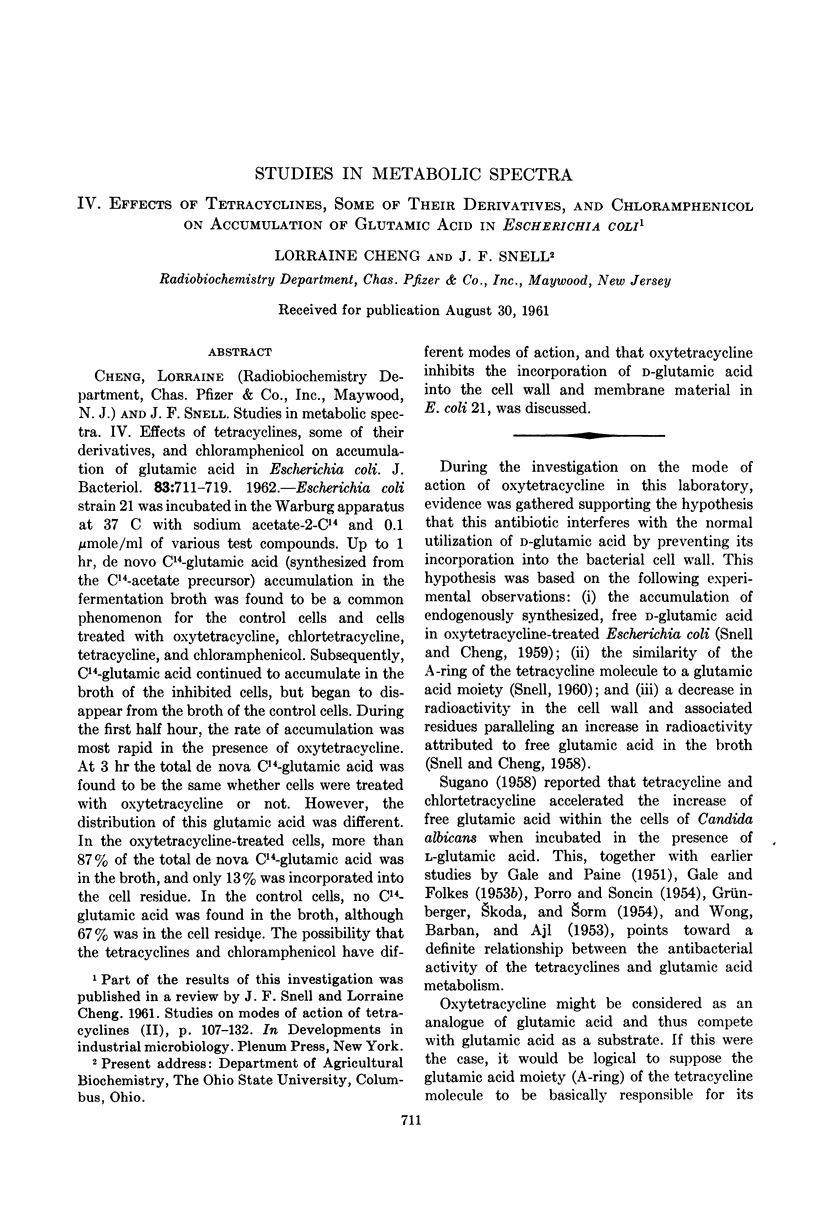
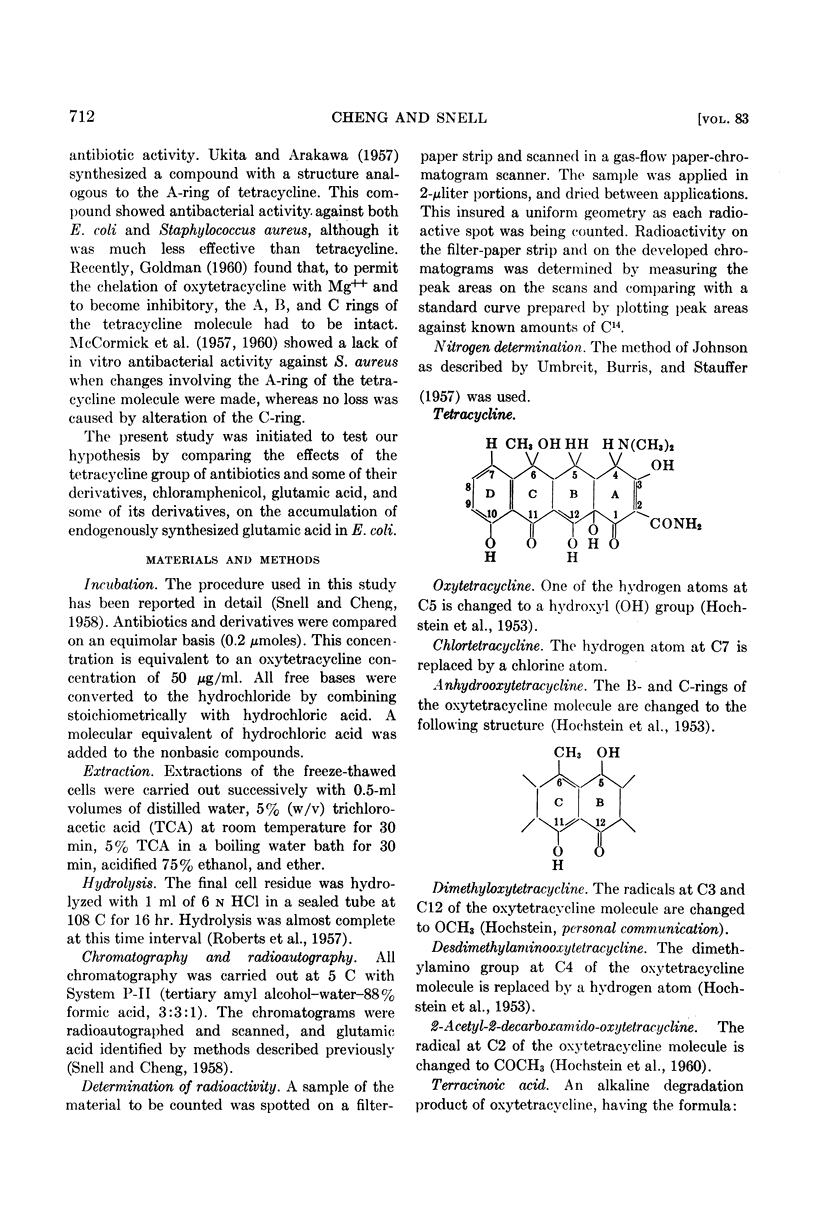
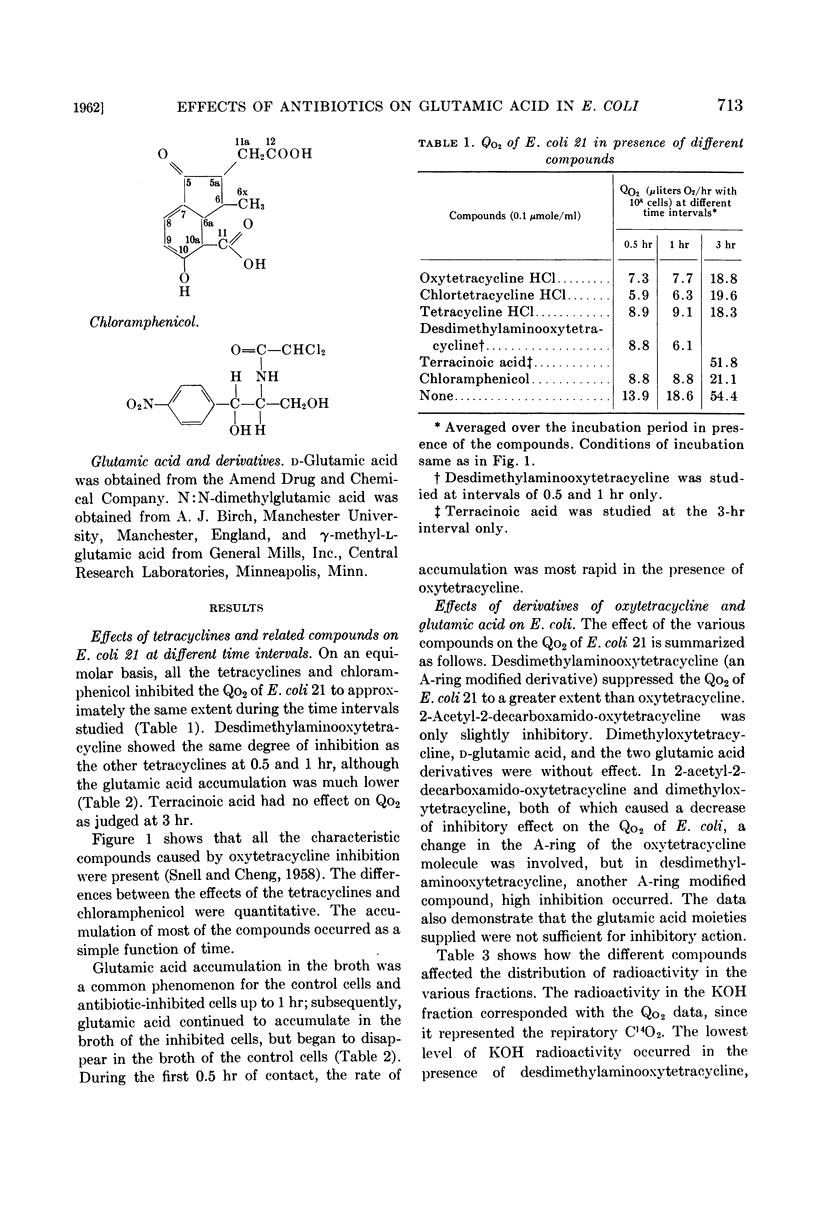
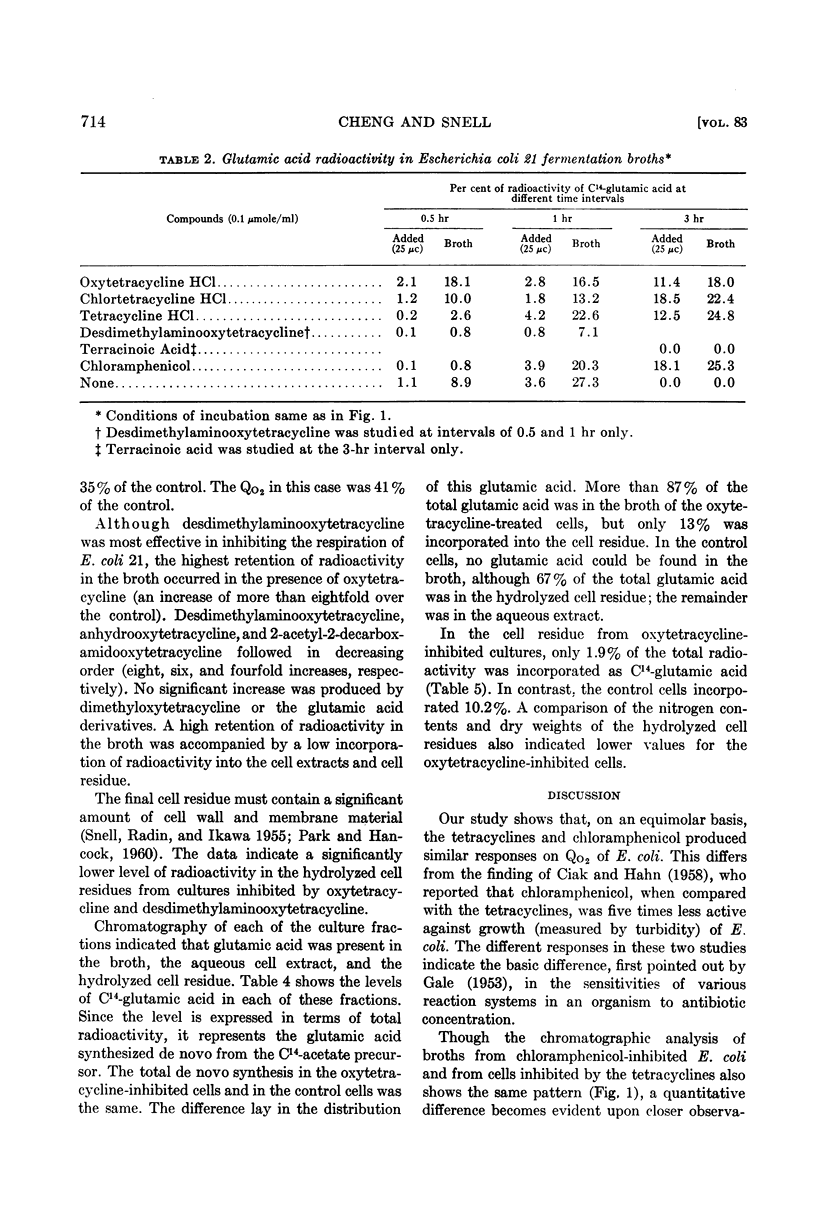
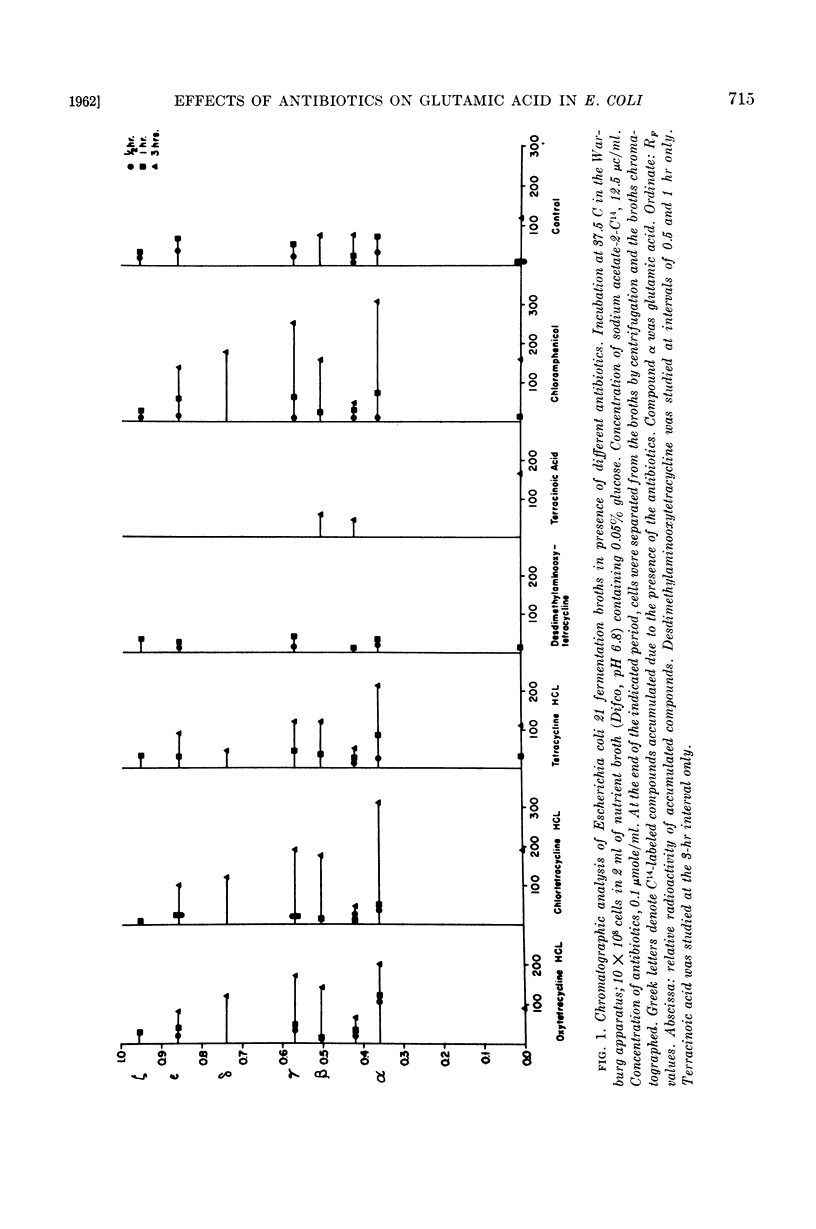
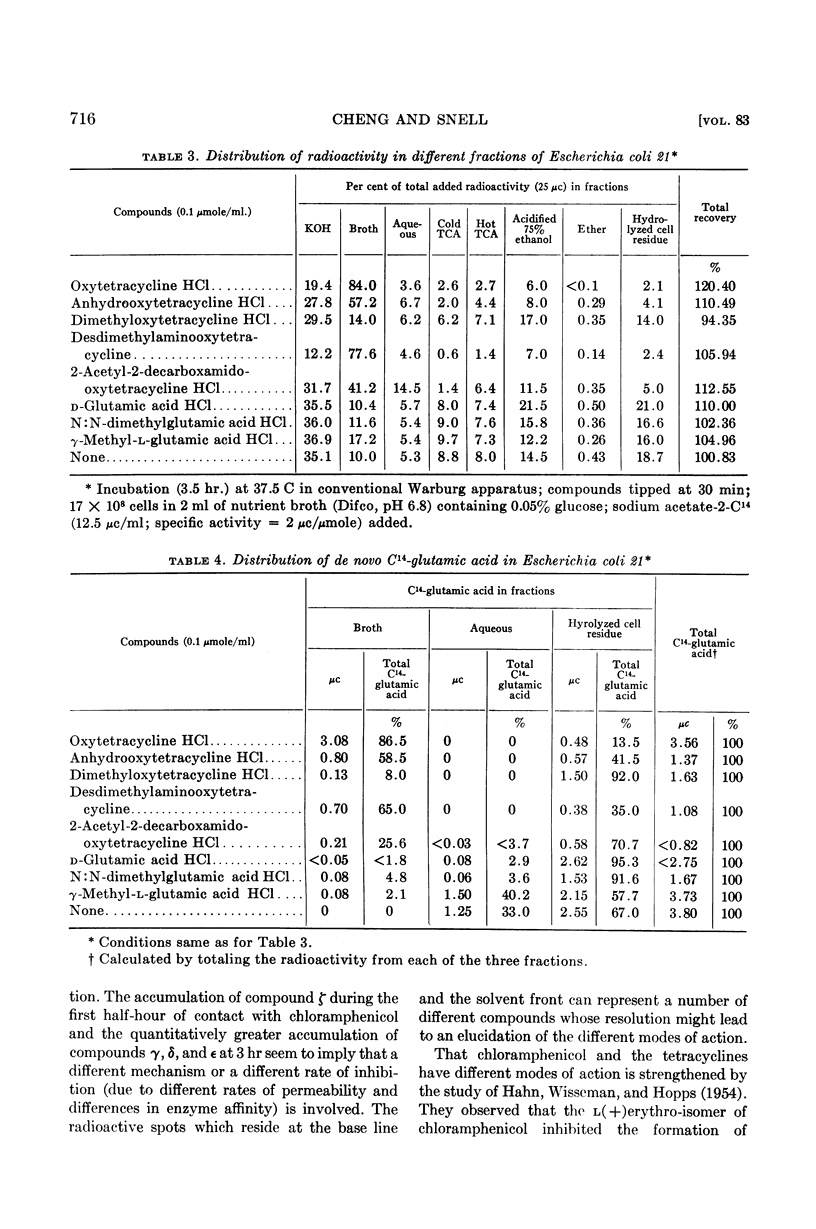
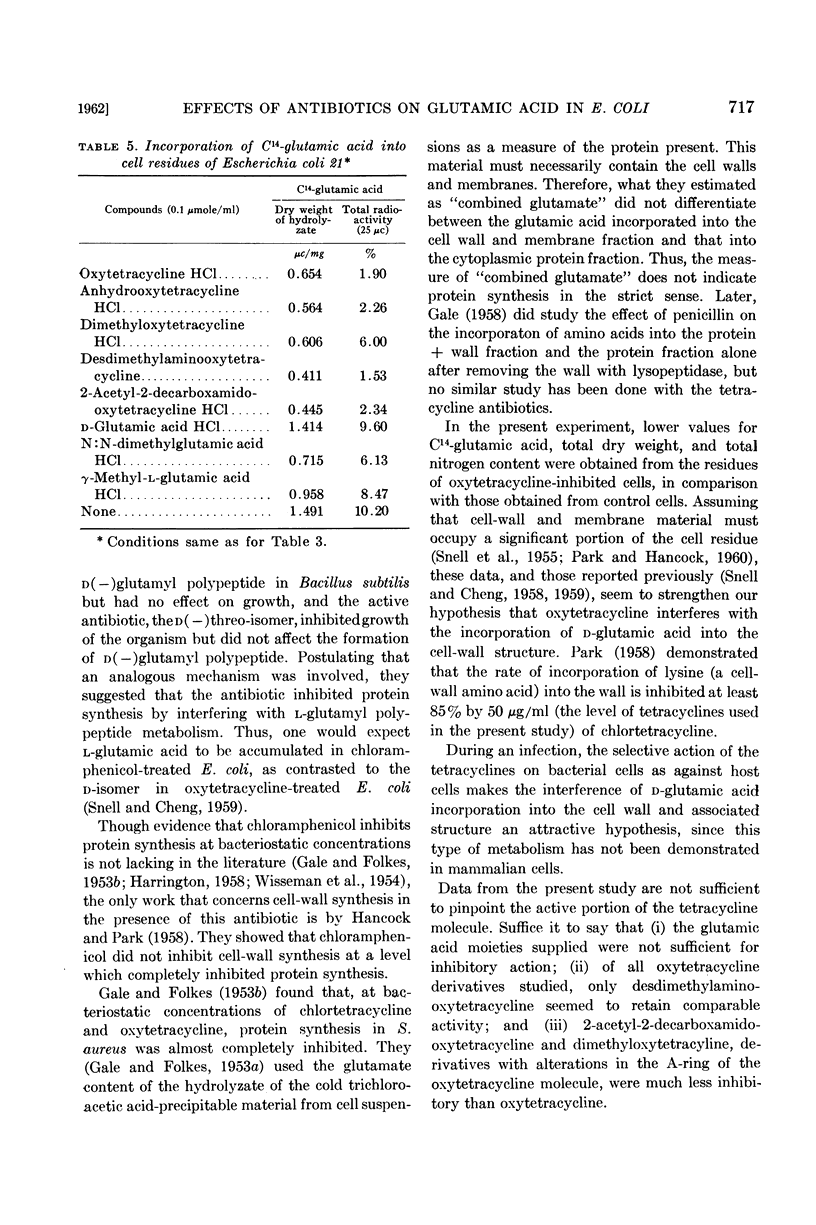
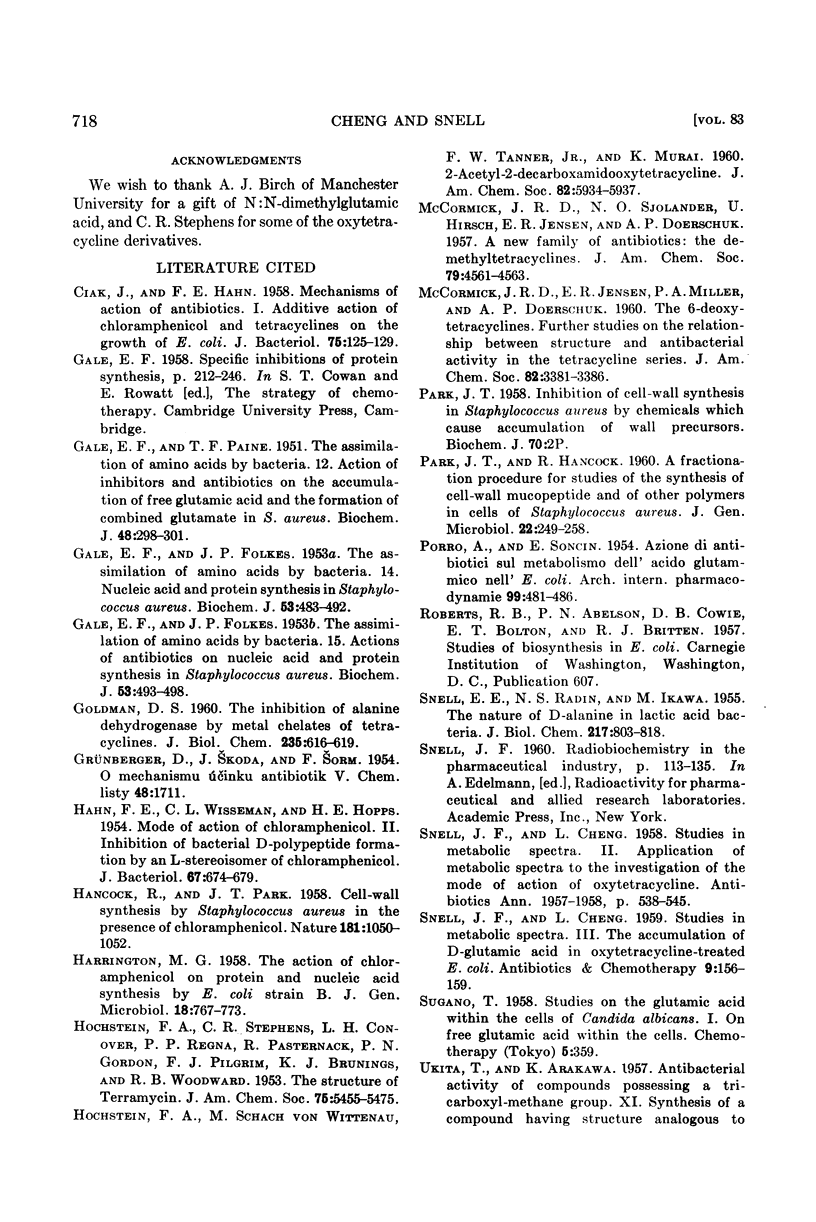
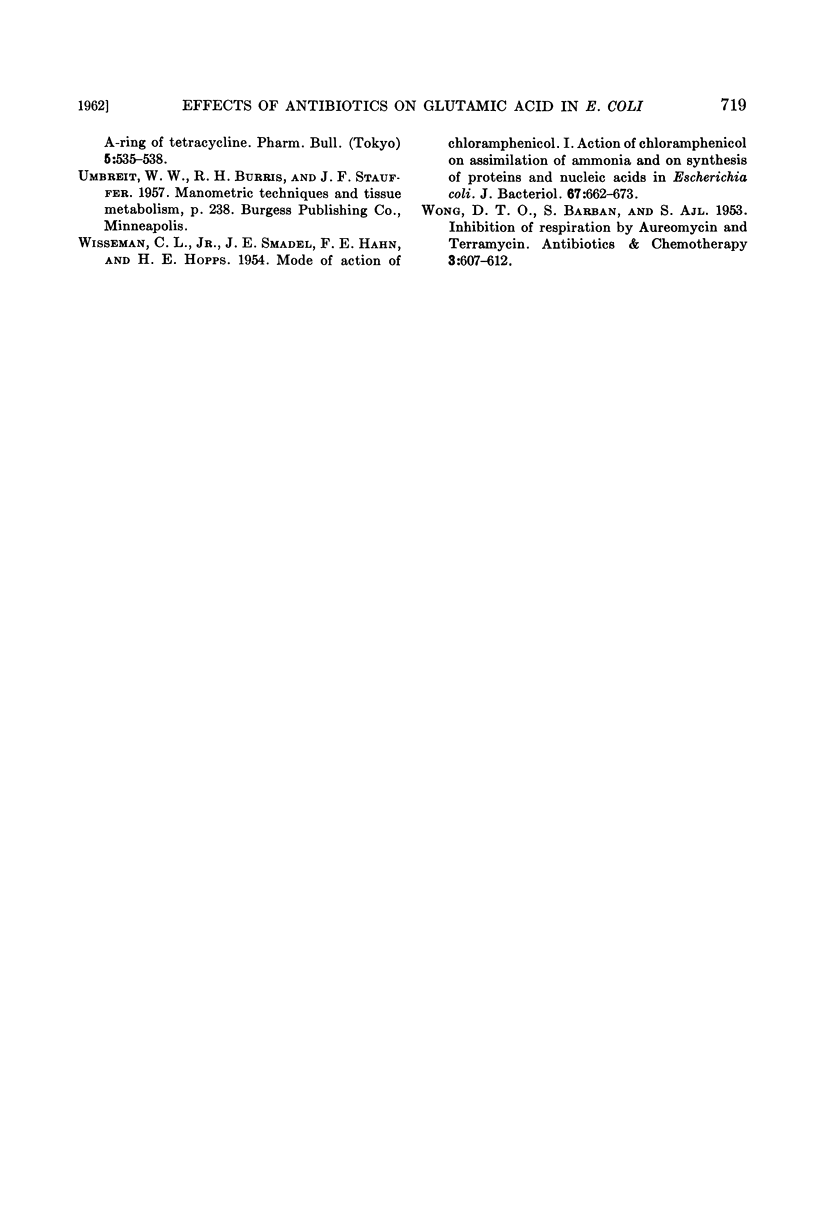
Selected References
These references are in PubMed. This may not be the complete list of references from this article.
- CIAK J., HAHN F. E. Mechanisms of action of antibiotics. I. Additive action of chloramphenicol and tetracyclines on the growth of Escherichia coli. J Bacteriol. 1958 Feb;75(2):125–129. doi: 10.1128/jb.75.2.125-129.1958. [DOI] [PMC free article] [PubMed] [Google Scholar]
- GALE E. F., FOLKES J. P. The assimilation of amino-acids by bacteria. XIV. Nucleic acid and protein synthesis in Staphylococcus aureus. Biochem J. 1953 Feb;53(3):483–492. doi: 10.1042/bj0530483. [DOI] [PMC free article] [PubMed] [Google Scholar]
- GALE E. F., FOLKES J. P. The assimilation of amino-acids by bacteria. XV. Actions of antibiotics on nucleic acid and protein synthesis in Staphylococcus aureus. Biochem J. 1953 Feb;53(3):493–498. doi: 10.1042/bj0530493. [DOI] [PMC free article] [PubMed] [Google Scholar]
- GALE E. F., PAINE T. F. The assimilation of amino-acids by bacteria; the action of inhibitors and antibiotics on the accumulation of free glutamic acid and the formation of combined of combined glutamate in Staphylococcus aureus. Biochem J. 1951 Mar;48(3):298–301. doi: 10.1042/bj0480298. [DOI] [PMC free article] [PubMed] [Google Scholar]
- GOLDMAN D. S. The inhibition of alanine dehydrogenase by metal chelates of tetracycline. J Biol Chem. 1960 Mar;235:616–619. [PubMed] [Google Scholar]
- HAHN F. E., WISSEMAN C. L., Jr, HOPPS H. E. Mode of action of chloramphenicol, II. Inhibition of bacterial D-polypeptide formation by an L-stereoisomer of chloramphenicol. J Bacteriol. 1954 Jun;67(6):674–679. doi: 10.1128/jb.67.6.674-679.1954. [DOI] [PMC free article] [PubMed] [Google Scholar]
- HANCOCK R., PARK J. T. Cell-wall synthesis by Staphylococcus aureus in the presence of chloramphenicol. Nature. 1958 Apr 12;181(4615):1050–1052. doi: 10.1038/1811050a0. [DOI] [PubMed] [Google Scholar]
- HARRINGTON M. G. The action of chloramphenicol on protein and nucleic acid synthesis by Escherichia coli strain B. J Gen Microbiol. 1958 Jun;18(3):767–773. doi: 10.1099/00221287-18-3-767. [DOI] [PubMed] [Google Scholar]
- PARK J. T., HANCOCK R. A fractionation procedure for studies of the synthesis of cell-wall mucopeptide and of other polymers in cells of Staphylococcus aureus. J Gen Microbiol. 1960 Feb;22:249–258. doi: 10.1099/00221287-22-1-249. [DOI] [PubMed] [Google Scholar]
- PORRO A., SONCIN E. Azione di alcuni antibiotici sul metabolismo dell'acido glutammico nell' E. coli. Arch Int Pharmacodyn Ther. 1954 Oct 1;99(3-4):481–486. [PubMed] [Google Scholar]
- SNELL E. E., RADIN N. S., IKAWA M. The nature of D-alanine in lactic acid bacteria. J Biol Chem. 1955 Dec;217(2):803–818. [PubMed] [Google Scholar]
- SNELL J. F., CHENG L. Studies in metabolic spectra. II. Application of metabolic spectra to the investigation of the mode of action of oxytetracycline. Antibiot Annu. 1957;5:538–545. [PubMed] [Google Scholar]
- WISSEMAN C. L., Jr, SMADEL J. E., HAHN F. E., HOPPS H. E. Mode of action of chloramphenicol. I. Action of chloramphenicol on assimilation of ammonia and on synthesis of proteins and nucleic acids in Escherichia coli. J Bacteriol. 1954 Jun;67(6):662–673. doi: 10.1128/jb.67.6.662-673.1954. [DOI] [PMC free article] [PubMed] [Google Scholar]


